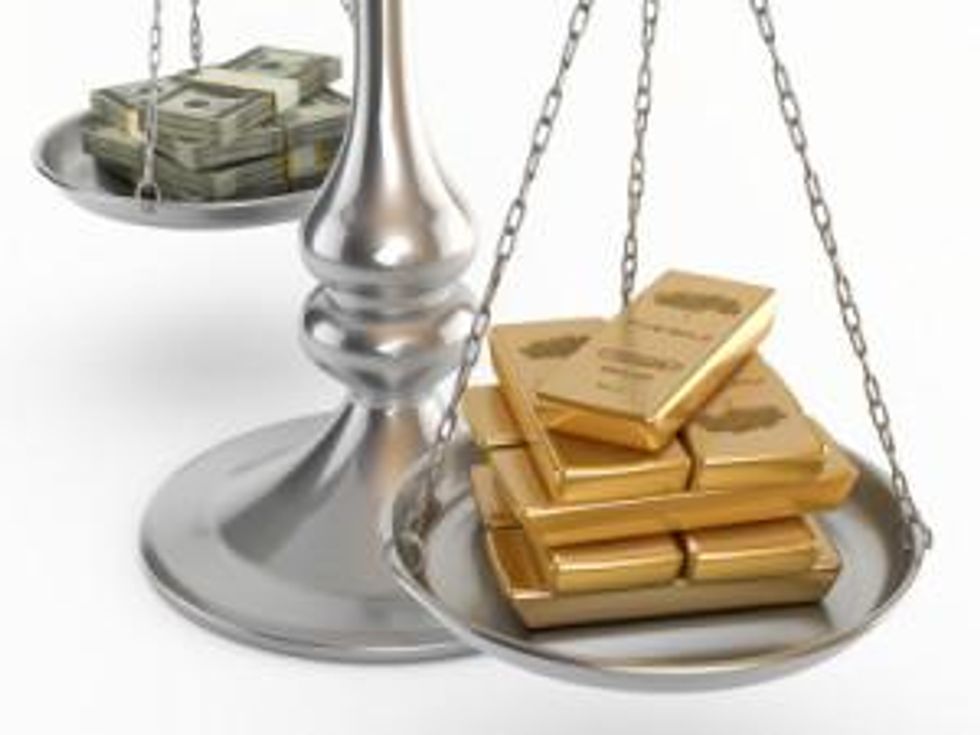Gold fell sharply last month, but now investors are taking an interest in physical gold.
Gold’s sharp decline, which saw the metal fall to $1,321 on April 16, led to a global surge in physical demand. But some market participants question whether this appetite and the upward price moves are sustainable.
Surging demand drove the US Mint to suspend sales of 1/10-ounce gold coins, Reuters reported. By April 30, the Mint had reported sales of 312,500 gold coins. Equaling 209,500 ounces, April’s gold coins sales are more than a quarter of the 753,000 ounces sold in 2012, according to Bloomberg.
Australia’s Perth Mint, which is also the nation’s largest gold refiner, has also witnessed surging demand. In an effort to keep pace, Perth stayed open through the weekend.
“We haven’t seen levels like this since the 2008 global financial crisis,” Ron Currie, sales and marketing director, told Bloomberg. “Compared to March sales, April sales have doubled or tripled,” he said.
Demand for physical gold, including coins, bars and jewelry is being reported in markets around the globe, including the top consumers, India and China.
Gold demand despite premiums
“The U.S. Mint is generally the last place gold shoppers buy their ounces because they have to pay ‘a hefty premium’ for gold. It’s like going to 7-Eleven on Christmas to buy AA batteries for the electronic toy Santa left under the tree,” wrote Frank Holmes of US Global Investors.
Likewise, in some Asian and Middle Eastern markets, as demand has increased and supplies have tightened or shortages have emerged, buyers have continued displaying a strong appetite despite premiums that are at multi-year highs.
Before the price slump, wholesalers and bulk buyers in Dubai were paying about 50 cents per ounce over the London cash price for a 1-kilogram bar. Now, they are paying $6 to $9 an ounce to secure those bars, said Fredric Panizutti, global head of marketing and sales at Swiss bullion refiner MKS Precious Metals. Panizutti told Bloomberg that in Turkey, people are paying premiums of up to $25 an ounce.
Who is buying gold?
“While retail buyers seem to be jumping back into the market, investor and fund types are opting out, best evidenced by the continued holding declines in the massive SPDR gold trust,” states a precious metals report from INTL FC Stone.
Standard Bank said in a note that ETF investors are of the same opinion as players in the futures market. They are not convinced that gold can sustain the upward momentum. Last week, ETF holdings dropped another 59 metric tons for an 11th week of liquidation.
Joyce Liu, an investment analyst at Phillip Futures in Singapore, believes that if the recent buying is a fundamental shift whereby commercial buyers are shifting from paper to physical gold, prices may continue to go up.
“But then I suspect, it’s most likely the buyers are retail investors who don’t know much about gold’s personality and behavior. If that’s the case, how long can this physical buying sustain?” Liu told Reuters.
Perth’s Currie said the buyers are speculating on a price rise. India and China have a reputation for jumping into the market after pullbacks. The World Gold Council (WGC) said that is exactly what they did this month.
Gold has made a double-digit rebound and is up more than $150 over its low on April 16. If this trend continues, the metal could become increasingly less attractive to bargain hunters.
Will central banks lead the way?
John Paulson, hedge fund manager and major gold ETF investor, reportedly wrote a letter to clients telling them that demand from Asia and central bank buying will support gold prices.
Central banks, which hold over 30,000 metric tons of gold, according to the WGC, are said to be among the biggest losers in the recent sell off. The value of their reserves fell $560 billion, reported Bloomberg.
Some emerging-market central banks, such as those in South Korea, Azerbaijan and Turkey, have continued buying despite the market weakness seen this year. Russia and Kazakhstan reportedly made gold purchases as recently as March.
However, many central banks are looking for yield, and an increasing number are turning to equities as a means to diversify their reserves.
An annual survey of central banks conducted in February by the Royal Bank of Scotland found that two-thirds of the 60 respondents were more inclined to purchase equities than they were a year ago.
Eight reserve managers reported that their central banks had already purchased stocks. About a quarter said that equities either were a part of their reserve management or will be in the next five years. The report notes that these statements represent a remarkable shift in official sector attitudes toward the asset class, according to CNBC.
Central bank investment trends are important to the gold market. UBS analyst Edel Tully said the vote of confidence from central banks has helped confidence. Tully noted that the gold sell off in February stabilized after chatter emerged that central banks were in the market and IMF data backed that up.
Market participants will undoubtedly take note of whether central banks have also joined in on this month’s buying spree.
Exercise moderation
From February 1975 to August 1976, gold saw a 44 percent pullback, according to Holmes. But afterwards, investors that held tight were rewarded by a 700-percent rise from the fall of 1976 to 1980.
Holmes said therein lies a mixed a message: though gold has displayed an ability to from recover steep declines, gold could fall further, to $1,050.
Highlighting the metal’s volatility and citing the high risk in trying to get rich via a play in gold, Holmes reminded investors of the words of Roman philosopher Marcus Tullius Cicero: “never go to excess, but let moderation be your guide.”
Securities Disclosure: I, Michelle Smith, hold no direct investment interest in any company mentioned in this article.
Related reading:
Has Gold Lost its Luster?





